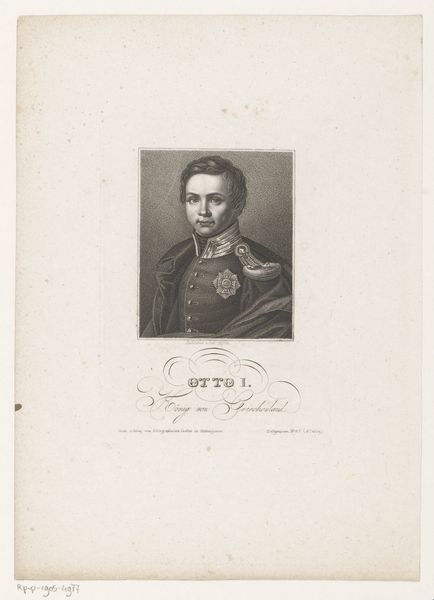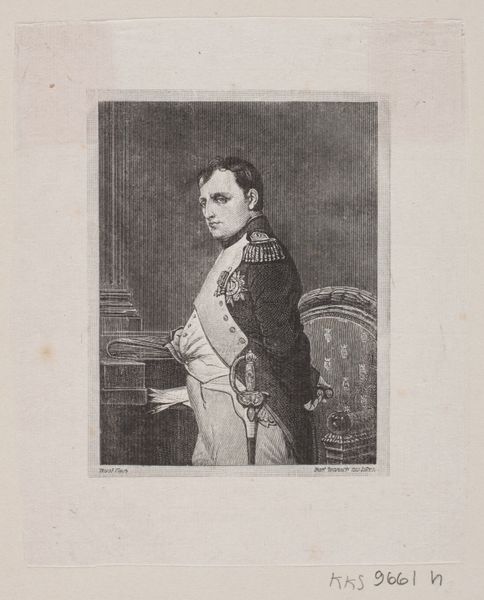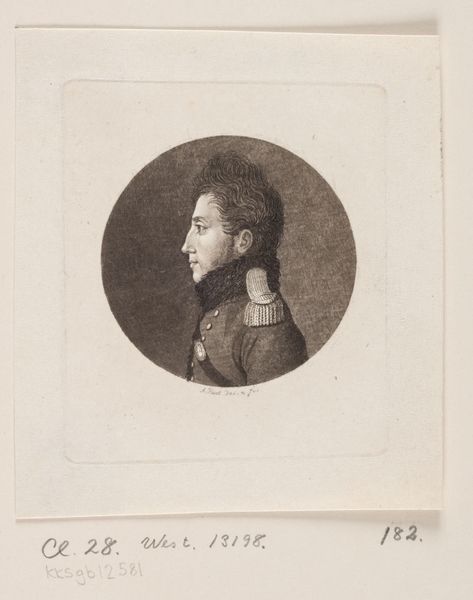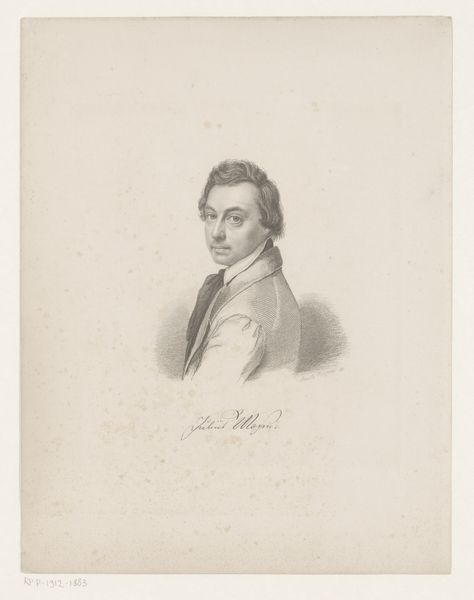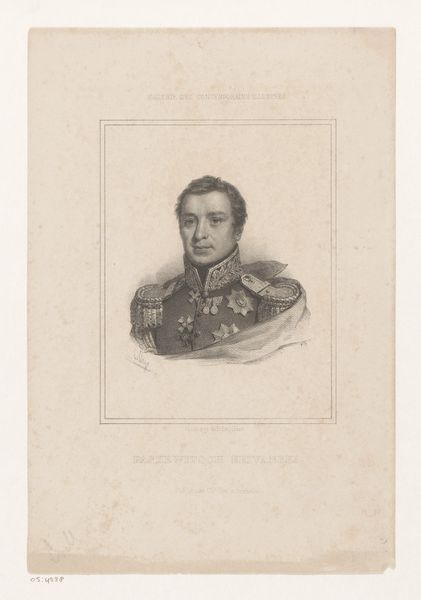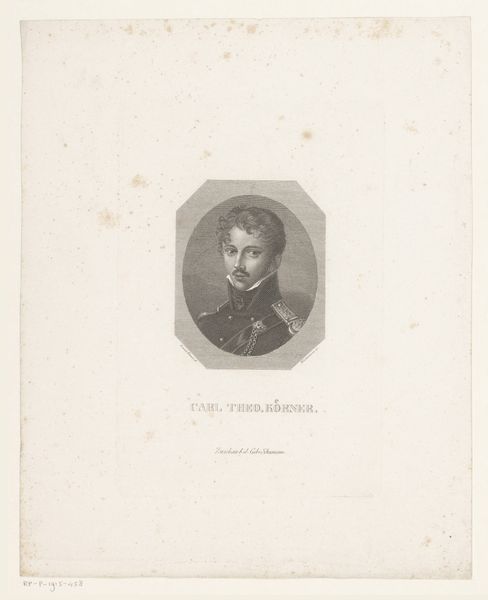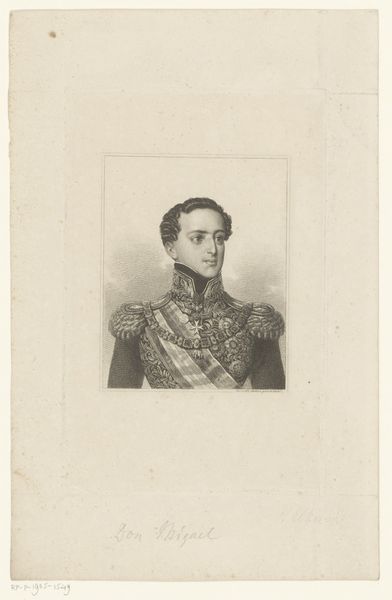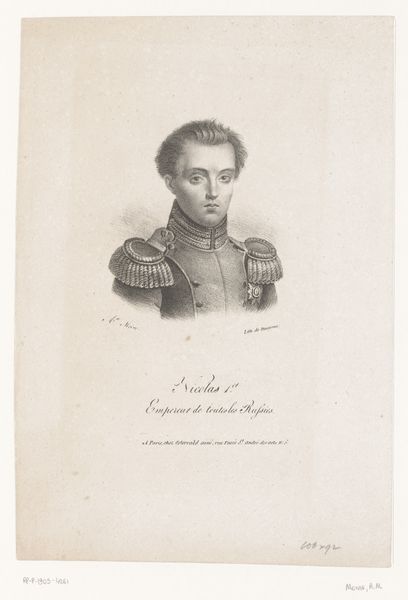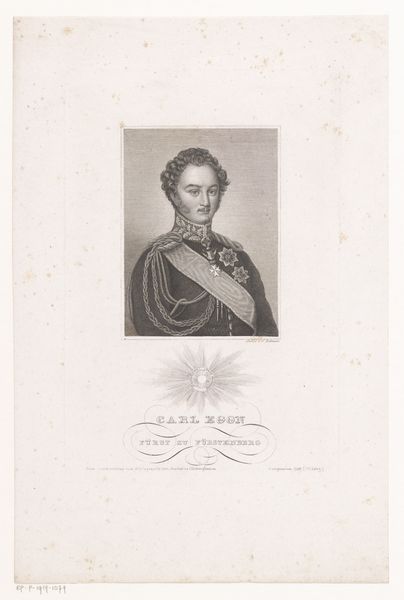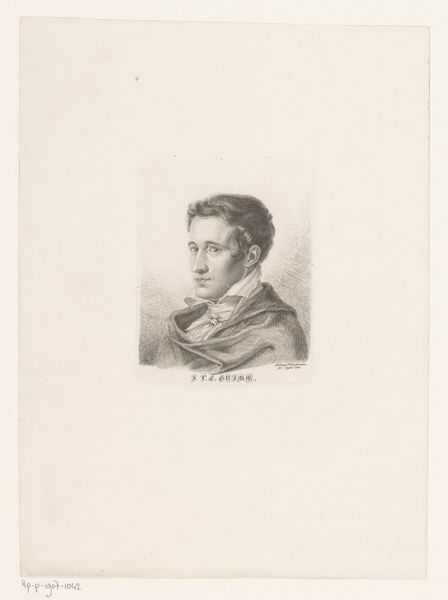
print, engraving
#
portrait
#
pencil drawn
#
neoclacissism
# print
#
pencil sketch
#
pencil drawing
#
pencil work
#
history-painting
#
engraving
Dimensions: height 171 mm, width 120 mm
Copyright: Rijks Museum: Open Domain
Curator: This engraving, dating from 1840 to 1855, offers a ‘Portret van Otto I van Griekenland,’ an elegant rendering of the Bavarian prince who became the first modern King of Greece. Editor: The figure seems so young and rather somber. It has an almost haunting quality, with sharp contrasts defining his features within that very formal setting. The detail in the rendering feels incredibly precise, almost photographic, yet restrained by its monochrome palette. Curator: The artist has carefully controlled the tonality to structure our gaze. Observe the clear delineation of forms through tonal gradations, typical of Neoclassical portraiture, drawing the eye toward a hierarchical balance. This contributes to its aura of stately dignity and self-possession. Editor: He certainly cuts a regal figure, but those elaborate embellishments—medals and decorative frogging—speak of so much more than mere identity. What is being communicated with all of that gilded detailing and heavy ornament? They certainly imply an attempt at forging a modern royal identity rooted in established historical traditions. Curator: Absolutely. Semiotically, each element denotes status and power, speaking volumes of the subject’s role. Structurally, we see the integration of decorative elements working to subtly frame the subject's position within both a visual and sociopolitical hierarchy. Editor: These portraits were clearly used as tools to build and control perception and therefore build the image and legacy of the man as king. That wreath-like design on his chest for instance: a stylized symbol implying authority, nation, and historical destiny perhaps? Curator: Indeed, it is an intriguing work to analyze given the subject and historical context of a new monarchy being established. The composition shows the interplay of light and shadow. What do you make of how the artist has used it? Editor: Given that play of light and shadow, along with Otto’s intense gaze, makes one question what we are meant to know—or not to know—about the subject as we try to understand the narrative the image intends to create. Curator: These portraits serve as excellent examples of formal and symbolic visual constructions. They continue to present many avenues for study regarding visual power and historical construction. Editor: Definitely! It opens up so many intriguing lines of inquiry into the symbols through which societies define leadership.
Comments
No comments
Be the first to comment and join the conversation on the ultimate creative platform.
